Business Solutions and Lean Systems Engineering is one of the Five Core Competencies of the Lean enterprise.
The Business Solutions and Lean Systems Engineering competency describes how to apply Lean-Agile principles and practices to the specification, development, deployment, and evolution of large, complex software applications and cyber-physical systems.
Humanity has always dreamed big and scientists, engineers, and developers turn those big dreams into reality. Realizing big dreams requires innovation, experimentation, and knowledge from many diverse disciples. Engineers lead the creation of these big ideas by defining and coordinating all the activities necessary to successfully specify, design, test, deploy, evolve, and ultimately decommission large, complex solutions. That includes:
- Requirements analysis
- Business capability definition
- Functional analysis and allocation
- Design synthesis
- Verification and validation (V&V)
- Design alternatives and trade studies
- Modeling and simulation
As they build and deploy ever-larger applications—in increasingly complex, connected, and unpredictable environments—systems and software engineers, architects, designers, developers, testers, and others face even more significant challenges. This competency describes the critical practices to build large, complex, cyber-physical systems, as well as the world’s most significant IT business solutions. Most cyber-physical systems are driven by significant, backend, IT solutions that run their operations. Figure 1 shows an autonomous delivery solution example that includes both the business and vehicle architectures. The principles and practices presented here apply to both, expressed as a single competency.
- Principle #1 – Take an economic view
- Principle #2 – Apply systems thinking
- Principle #3 – Assume variability; preserve options
- Principle #4 – Build incrementally with fast, integrated learning cycles
- Principle #5 – Base milestones on objective evaluation of working systems
- Principle #6 – Visualize and limit WIP, reduce batch sizes, and manage queue length
- Principle #7 – Apply cadence; synchronize with cross-domain planning
- Principle #8 – Unlock the intrinsic motivation of knowledge workers
- Principle #9 – Decentralize decision-making
- Principle #1 uses economics to drive all decisions and ensures we include all relevant parameters in the decision process: development costs, production costs, delivery cycle time, value delivered, etc.
- Principle #2 confirms that everyone understands and commits to the common goals of the system and that all decisions optimize the whole solution, not individual components. It also calls out our responsibility to provide solution builders with the appropriate knowledge and alignment to make good, localized decisions that optimize the whole.
- Principle #3 tells us that exploring alternatives is an investment in knowledge creation that leads to more optimal technical decisions. Better decisions minimize the costs and delays of downstream inefficiencies and rework.
- Principle #4 tells us to use cadence-based learning cycles to evaluate these alternatives. While Agile teams use iterations to build potentially releasable products, large systems also use increments to validate technical assumptions.
- Principle #5 uses the demonstrable learning gained from each cycle as the only real measure of progress. Sequential, phase-gate models that value documents and specifications delay risk and assumption mitigation. Instead, measuring progress by validating technical assumptions and user acceptance via objective evidence reduces risk and provides better outcomes.
- Principle #6 ensures fast flow and quick feedback on the learning cycles. Small batches of work—the smallest possible thing that will possibly work, with low WIP and small queues—ensure fast flow through the system.
- Principle #7 provides a regular, predictable cadence for validating decisions and adapting to new knowledge. Regular synchronization offers the ability to align all system builders and ensures all perspectives are understood and resolved.
- Principle #8 recognizes that knowledge workers may have fundamentally different motivations than traditional workers and that leaders of large solutions are responsible for creating an environment in which these workers can thrive.
- Principle #9 tells us that part of that motivation is autonomy. Pushing decision-making down to teams and individuals requires our leaders to equip all solution builders with the knowledge to make productive, decentralized decisions.
-
Figure 2. Eight practices for building large solutions with SAFe
Business Solutions and Lean Systems Engineering
-
Figure 3. Solution trains coordinate large solution delivery
-
Figure 4. Fixed and variable solution intent and solution context
-
Figure 5. Multiple planning horizons facilitate realistic and largely localized planning
-
Figure 6. Architecture impacts the ability of the release of system elements
-
Figure 7. Supply chains with system-of-systems in SAFe

-
Figure 1. Autonomous vehicle systems with a large-scale
business solution and lean systems engineering aspects

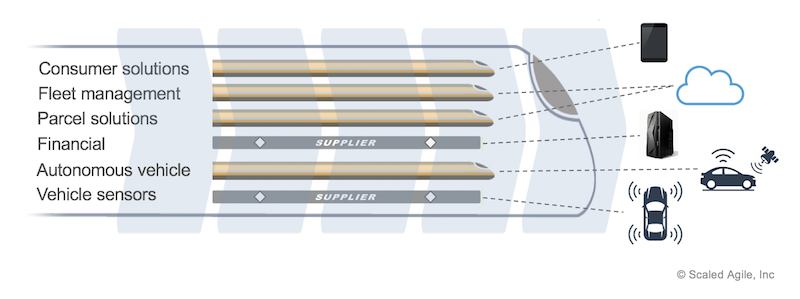
- Align teams on the ‘what’ and the ‘how’ of building future (to-be) functionality
- Provide a record of existing requirements and design for validation and compliance concerns (as-is)

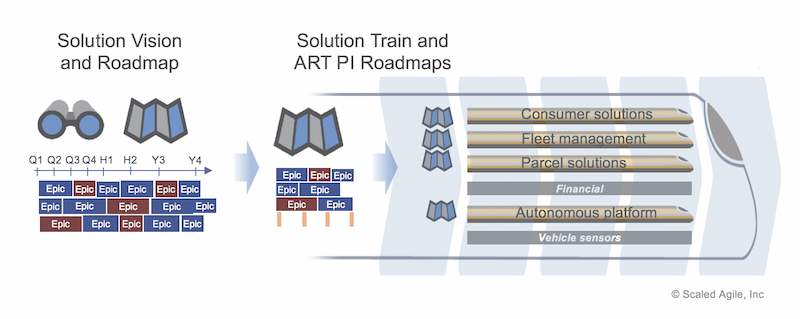
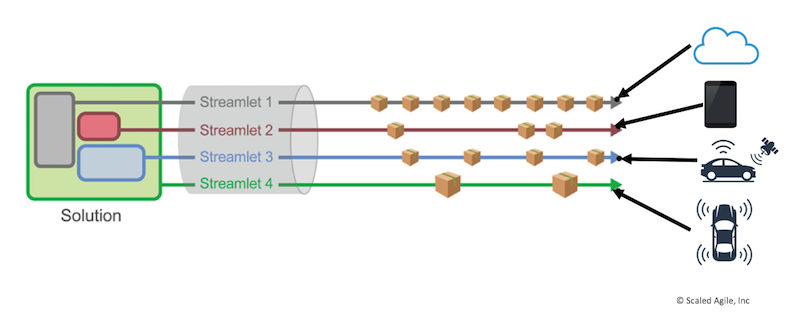

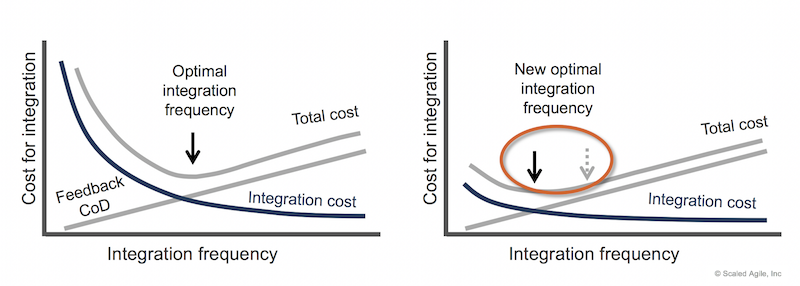
-
Figure 8. Automation changes the economics of frequent integration

-
Figure 9. Cadence and synchronization enable frequent integration
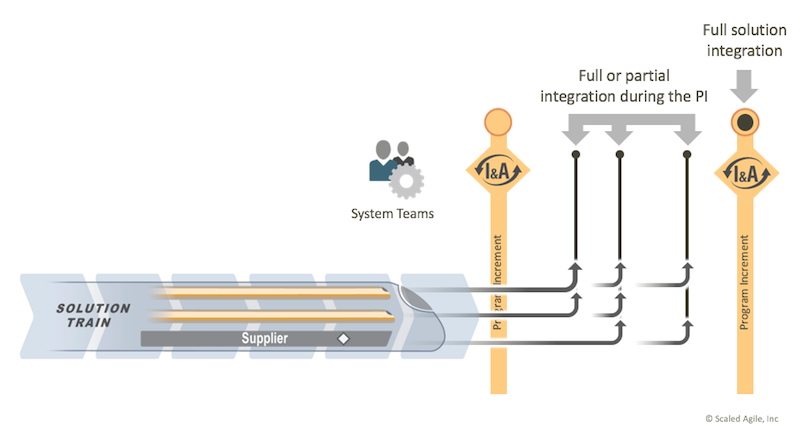
-
Figure 10. Frequently integrate an end-to-end solution









































